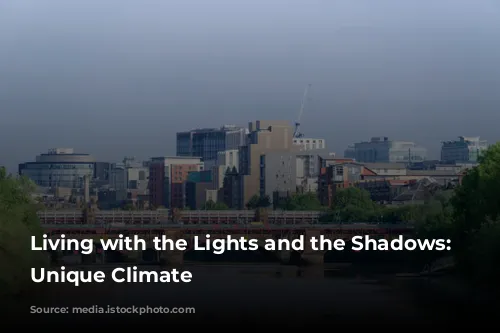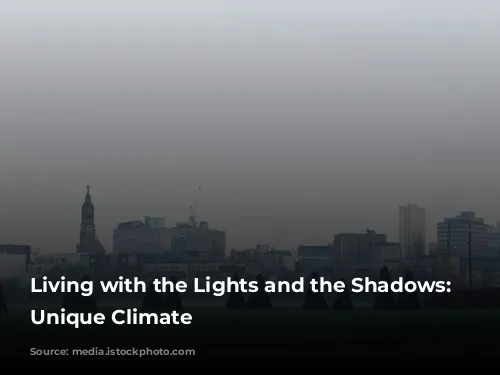London’s weather is a fascinating blend of extremes, influenced by its geographic location and the warm Gulf Stream.
The city’s latitude—51°30’ North—plays a significant role in the amount of daylight Londoners experience. This can be a bit of an adjustment for newcomers, especially those accustomed to consistent sunshine. The stark contrast between the short, dark days of winter and the long, light days of summer is unique to the region.
The changing seasons bring about dramatic shifts in daylight hours. During winter, the sun rises around 8am and sets before 4pm, leaving Londoners navigating the city in the dark for much of the day. The lack of sunshine can be a bit disheartening, especially for those used to sunny climates.
Summer, however, offers the opposite experience, with the sun rising as early as 4am, accompanied by the chirping of birds at dawn. While this offers plenty of daylight hours for outdoor activities, it can be challenging to adjust to the early mornings and long evenings.
However, London’s climate is remarkably temperate despite its northerly location. Thanks to the warm Gulf Stream, the British Isles experience milder temperatures than expected for their latitude. This makes London an attractive place to live, as it rarely experiences extreme cold or heat.
The average daytime temperature in January is around 8°C (46°F), while the average high in July is 22°C (73°F). While some days can reach temperatures above 25°C (77°F) or even 30°C (86°F) in summer, these are not common occurrences. Similarly, the temperature in winter can dip below freezing, but most homes have heating systems to keep residents warm.

London’s Rainy Days: A Constant Companion
One aspect of London’s weather that everyone needs to be prepared for is the rain, which seems to be a frequent occurrence throughout the year. While the average rainfall isn’t exceptionally high—around 23 inches/58 centimeters a year—the city experiences a consistent drizzle.
It’s a good idea to have a small, lightweight umbrella or a waterproof jacket handy. London does have the occasional thunderstorm with heavy rain, but for the most part, the precipitation is gentle and steady.

Snow in London: A Rare and Disruptive Event
Snow is an unusual occurrence in London, much to the chagrin of children who dream of building snowmen. This is partly because the city generates a significant amount of heat from buildings and cars, making it difficult for snow to settle.
The city is typically warmer than the surrounding countryside, meaning London experiences snow less frequently than surrounding areas. When snow does fall, it can cause widespread disruption, as the city isn’t well-equipped to handle it.
London’s transportation system, particularly the Underground and train services, is vulnerable to snow and ice. The Tube lines, which run above ground in the city’s outskirts, are especially susceptible to delays and cancellations during snowy conditions.
Road traffic is particularly impacted by snow, even small amounts. London’s drivers are not accustomed to driving in snow and ice, which often leads to accidents and gridlock.
London’s Heat: A Rare and Short-Lived Phenomenon
London’s summers, while not always pleasant, are rarely sweltering. The city is typically a bit damp during the summer, which can make it feel uncomfortable on hot days.
The most Londoners can hope for is a few days in the low 80s (F), when the city enjoys a pleasantly warm period. London’s homes are generally not equipped with air conditioning, as long hot summers are uncommon.
London’s climate is a fascinating blend of contrasts, offering a unique experience for those who live there. From the long, dark days of winter to the surprisingly mild temperatures and the rare snowfalls, the city provides an ever-changing backdrop for daily life.









